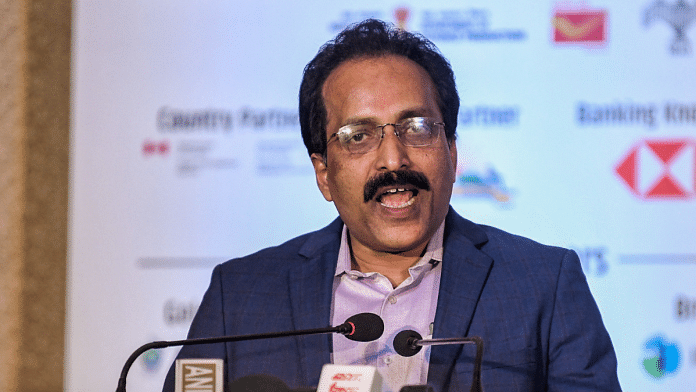New Delhi: After successfully landing on the Moon, the Indian Space Research Organisation (ISRO) now aspires to pull off a landing on Mars. ISRO chief S. Somanath has said that the Indian space agency, which already has a Mars orbiter under its belt, is planning a lander mission for the Red planet.
During a presentation at the Indian National Science Academy, Delhi, Somanath outlined the missions that are being planned by the space agency.
In one of the slides, Somanath indicated that a Mars lander mission is at a conceptual stage but didn’t elaborate. Asked later about the status of ISRO’s Mars lander mission, Somanath told ThePrint it was “an aspiration”, adding that no work has begun on the project yet.
This comes over a month after ISRO successfully landed its lunar mission, Chandrayaan-3, near the south pole of the Moon, becoming the first country to do so.
ISRO also has other missions at the conceptual stage, including a joint project with Canada called INSIST-CASTOR UV Astronomy mission.
The mission will carry a spectroscopy experiment led by India (INSIST) and an imaging experiment led by Canada (CASTOR) that will conduct studies in the ultraviolet spectrum with about 15 times better spatial resolution than the instruments onboard AstroSat — ISRO’s first dedicated astronomy mission “aimed at studying celestial sources in X-ray, optical and UV spectral bands simultaneously”.
“We have a lot of missions in the conceptual phase. We want to do a mission to Venus. The mission is already configured and the payloads are already developed,” Somanath said in his speech.
Also Read: As Chandrayaan-3 touches down on Moon’s surface, meet the key scientists behind mission
Studying exoplanets, another lunar mission — what ISRO has planned
According to Somanath, Venus is an interesting planet to study because no instrument can penetrate its thick atmosphere full of acids.
He also said that ISRO’s next satellite mission XPoSat will be launched by 25 December. Designed to study bursts of X-rays coming from dead stars, the satellite will carry two payloads — POLIX and XPECT.
POLIX or Polarimeter Instrument in X-rays will measure the polarimetry parameters (degree and angle of polarisation) in medium X-ray energy range of 8-30 keV photons of astronomical origin. The XSPECT (X-ray Spectroscopy and Timing) payload will give spectroscopic information in the energy range of 0.8-15 keV.
ISRO is also developing satellite aeronomy missions called DISHA H and L, which will look at the outer space climate that affects the climate on Earth, the ISRO chief said.
“We are conceiving a satellite called ExoWorlds — a mission that will study the atmospheric characteristics of exoplanets,” he said.
Planetary bodies found outside the solar system, exoplanets are of special interest to scientists across the world as they provide insight into the evolution of planets.
In addition, ISRO has joint collaboration planned with France called Thermal InfraRed Imaging Satellite for High-resolution Natural resource Assessment (TRISHNA) in 2025, which will conduct thermal infrared imaging for ecosystem studies.
Developed in collaboration with the French Space Agency (CNES), the satellite will join the Franco-Indian fleet for use in climate monitoring and operational applications.
And then in 2026-28, ISRO and Japanese space agency JAXA will launch a lunar mission, which will carry an Indian lander and rover to carry out studies on the surface of the Moon.
On Gaganyaan
In an earlier event at the Bharat Mandapam Tuesday, Somanath also told the media that the first Gaganyaan test will be conducted in October. Gaganyaan is India’s crewed orbital spacecraft that is intended to be the formative spacecraft of the Indian Human Spaceflight Programme.
But the ISRO chief declined to comment on Chandrayaan-3 and the status of the Vikram lander and Pragyan rover. After about a fortnight of the landing, both had been put to sleep as the lunar night — equivalent to 14 Earth days — set in, with the hope that these would be revived for another round of experiments on the surface.
However, so far ISRO’s ground stations have failed to achieve any connection with the lander and rover.
(Edited by Uttara Ramaswamy)
Also Read: Chandrayaan-3 shows more than just ISRO’s excellence. It’s the STEM catalyst India needed



